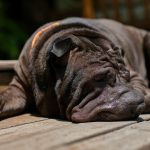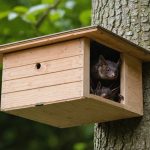Fear-based aggression in American Bulldogs can be a distressing issue for owners and their pets. Understanding the root causes of this behavior is essential for developing effective strategies. By addressing anxiety and building confidence through gradual exposure and positive reinforcement, you can help your dog become more secure in various environments. Explore actionable tips that promote trust and transform fear into resilience, ensuring a happier life for both you and your American Bulldog.
Understanding Fear-Based Aggression in American Bulldogs
Fear-based aggression in American Bulldogs is a defensive reaction stemming from anxiety or fear. This type of aggression is typically observed when a dog perceives a threat, whether real or imagined, and responds to protect itself. Canine behavior experts note that fear-based aggression is often misunderstood, leading to improper handling or training approaches.
A lire également : Essential Tips for Crafting a Balanced Diet for Your Diabetic Miniature Schnauzer
Characteristics and Signs
American Bulldogs may exhibit specific signs of fear-based aggression, such as growling, barking, or snapping. These behaviors are often accompanied by body language cues like a tucked tail, flattened ears, or avoidance of eye contact. Recognizing these symptoms early can prevent escalation and ensure the safety of both the dog and those around it.
Recognizing Fear Triggers
Understanding what triggers fear in American Bulldogs is crucial for managing their aggression. Common triggers include unfamiliar people or animals, loud noises, or new environments. By identifying these triggers, owners can take proactive steps to minimize exposure or gradually desensitize their pets. This approach not only helps reduce aggression but also builds trust and confidence in the dog.
Sujet a lire : Top Gentle Exercise Routines for Senior Border Terriers Living with Arthritis
In conclusion, addressing fear-based aggression in American Bulldogs requires a keen understanding of canine behavior and a compassionate approach to identifying and managing fear triggers. By doing so, owners can foster a safer and more harmonious relationship with their pets.
Causes of Fear-Based Aggression
Understanding the causes of aggression in American Bulldogs is crucial for effective management and prevention. Several factors contribute to fear-based aggression, each playing a significant role in a dog’s behavior.
Genetic Predispositions
American Bulldogs may have genetic predispositions that influence their behavior. Certain breeds are naturally more prone to fear-based aggression due to inherited traits. While genetics alone do not determine a dog’s behavior, they can predispose certain reactions to stressors or perceived threats.
Environmental Factors
Environmental factors are significant behavioral triggers in American Bulldogs. A lack of socialization during the critical early stages of development can lead to heightened fear responses. Dogs exposed to inconsistent environments or harsh training methods may develop defensive aggression as a coping mechanism. Providing a stable, nurturing environment can mitigate these effects.
Past Trauma
Past trauma significantly impacts a dog’s behavior, often leading to fear-based aggression. Experiences such as abuse, neglect, or traumatic events can leave lasting impressions, causing dogs to react aggressively when they feel threatened. Understanding a dog’s history is essential in addressing these behaviors and fostering a sense of security.
By recognizing these causes, owners can better address fear-based aggression, ensuring a safer and more harmonious relationship with their American Bulldogs.
Assessing Your American Bulldog’s Behavior
Understanding your American Bulldog’s behavior is pivotal in managing fear-based aggression. Employing effective observational techniques allows you to identify patterns and triggers in their actions. Start by observing your dog’s reactions to various stimuli, noting any signs of distress or aggression. This can include body language cues like a tucked tail or avoidance behaviors.
A behavior assessment involves more than just observation. Keeping a behavior journal is an excellent tool for tracking your dog’s progress over time. Record incidents of aggression, noting the context, environment, and any potential triggers. This data will help you identify patterns and measure improvements, providing valuable insights into your dog’s behavior.
While personal observations are crucial, consulting with professionals can offer additional perspectives. Training experts or veterinary behaviorists have the expertise to conduct comprehensive assessments, helping you understand the underlying causes of your dog’s aggression. They can also recommend tailored strategies for managing and reducing aggressive behaviors.
By combining personal observations with professional guidance, you can create a more effective plan for addressing fear-based aggression in your American Bulldog. This holistic approach ensures that you are well-equipped to foster a safer and more harmonious relationship with your pet.
Training Techniques to Combat Fear-Based Aggression
Effectively managing fear-based aggression in American Bulldogs requires a strategic approach, focusing on training techniques that promote positive behavior changes. One of the most effective methods is positive reinforcement, which encourages desired behaviors by rewarding them with treats, praise, or play. This approach not only builds trust but also strengthens the bond between the dog and its owner.
Implementing desensitization and counter-conditioning is another vital technique. Desensitization involves gradually exposing the dog to fear triggers in a controlled and safe environment, allowing them to become accustomed to these stimuli without reacting aggressively. Counter-conditioning complements this by teaching the dog to associate the previously feared stimulus with positive experiences. For example, if a dog is afraid of loud noises, pairing the sound with treats can help alter their perception.
Consistency is key in any training regimen. Establishing a consistent training routine ensures that the dog receives regular guidance and reinforcement, which is crucial for long-term behavior modification. Regular practice sessions, even if brief, help reinforce learning and prevent regression. By maintaining a structured routine, owners can effectively manage and reduce fear-based aggression in their American Bulldogs, fostering a more harmonious relationship.
Creating a Safe Environment
Establishing a safe space for your American Bulldog is essential in managing fear-based aggression. This area should be a secure, comfortable zone where your dog feels protected and relaxed. Consider using a quiet room or a designated corner with their bed and favourite toys, free from potential stressors.
Environmental management plays a critical role in reducing triggers that may provoke aggression. Begin by identifying and removing any items or situations that cause anxiety. This might include loud appliances, unfamiliar objects, or areas with heavy foot traffic. Minimising these elements creates a more peaceful environment conducive to positive behaviour.
Routine is fundamental in fostering stability and dog safety. Dogs thrive on consistency, and a predictable schedule can significantly reduce stress. Establish regular feeding times, walks, and play sessions to provide a sense of security. A structured routine helps your American Bulldog anticipate daily activities, reducing the likelihood of fear-induced reactions.
Incorporating these strategies not only enhances your dog’s well-being but also strengthens your bond. By prioritising a safe and managed environment, you contribute to a harmonious relationship with your pet, paving the way for effective behaviour management.
Socialization Strategies
Socialization is a crucial component in managing fear-based aggression in American Bulldogs. Gradual exposure to other dogs and people helps them adapt to new environments and stimuli. Begin by introducing your dog to calm, well-behaved animals or individuals in a controlled setting. This method reduces anxiety and fosters positive associations with new experiences.
Controlled socialization sessions are beneficial as they allow for a structured environment where your American Bulldog can learn at their own pace. These sessions should be short and positive, ensuring the dog remains comfortable and engaged. It’s important to monitor your dog’s reactions closely, adjusting the intensity and duration of interactions based on their comfort level.
Recognizing signs of stress during socialization is vital to prevent negative experiences. Look for cues such as excessive panting, yawning, or attempts to retreat. If these signs appear, it may be necessary to pause or modify the session to ensure the dog remains relaxed. By acknowledging and responding to these signs, owners can provide a supportive environment conducive to effective socialization.
Incorporating these strategies enhances your dog’s ability to navigate social situations confidently, reducing the risk of fear-based aggression and promoting a more harmonious relationship with their surroundings.
Professional Help and Resources
When managing fear-based aggression in American Bulldogs, knowing when to seek professional training is crucial. If your dog’s aggression becomes unmanageable or poses a risk to others, it’s time to consult a professional. Early intervention can prevent escalation and ensure both safety and well-being.
Several types of professionals specialize in handling fear-based aggression. Canine behaviorists are experts in understanding and modifying dog behavior. They assess the underlying causes of aggression and develop tailored strategies for improvement. Certified dog trainers also offer valuable guidance, focusing on obedience and socialization techniques.
There are numerous support resources available to assist owners. Online platforms provide access to expert advice and community forums where experiences and solutions are shared. Books and guides authored by renowned canine behaviorists offer insights into effective training methods. Additionally, local dog training schools often host workshops and classes that emphasize positive reinforcement and desensitization.
By leveraging these resources, owners can gain a deeper understanding of their dog’s behavior and learn practical strategies to manage fear-based aggression. This comprehensive approach not only enhances the dog’s quality of life but also strengthens the bond between the pet and its owner.
Anecdotal Success Stories
Exploring success stories and real-life examples provides valuable insights into managing fear-based aggression in American Bulldogs. These case studies not only highlight effective strategies but also offer hope and encouragement to dog owners facing similar challenges.
One notable success story involves an American Bulldog named Max, who struggled with fear-based aggression towards strangers. Through consistent positive reinforcement and gradual desensitization, Max’s owner successfully reduced his aggressive reactions. By rewarding calm behavior and slowly introducing Max to new people in controlled settings, the owner built trust and confidence in the dog.
Another compelling case study features Bella, an American Bulldog with a history of past trauma. Her owner collaborated with a canine behaviorist to understand Bella’s triggers and implement a tailored training plan. This plan included controlled socialization sessions and creating a safe space at home. Over time, Bella’s aggression decreased, demonstrating the power of professional guidance and patience.
These real-life examples emphasize the importance of understanding each dog’s unique needs and the effectiveness of personalized approaches. By learning from these experiences, other dog owners can adopt similar strategies, fostering a more harmonious relationship with their American Bulldogs.
Ongoing Management and Maintenance
Successfully managing fear-based aggression in American Bulldogs requires consistent behavior management and long-term strategies. It’s crucial to maintain ongoing training and reinforcement to ensure lasting positive behavior changes. Regular practice reinforces the lessons learned and prevents regression, helping your dog feel secure and confident.
As your dog progresses, it’s important to adjust strategies to meet their evolving needs. What worked initially may need modification to continue being effective. Monitor your dog’s reactions and behaviors, and be prepared to tweak your approach. This adaptability ensures that your training remains relevant and impactful.
Maintaining a supportive environment is equally vital. A stable, nurturing setting helps reinforce the training and provides a foundation for your dog to thrive. Ensure that your home is a safe space where your pet feels comfortable and protected. Consistency in routine and environment will bolster your dog’s confidence and reduce anxiety.
- Regularly assess your dog’s behavior and adjust strategies as needed.
- Keep training sessions brief but consistent to reinforce learning.
- Create a stable environment that supports your dog’s well-being.
By focusing on these long-term strategies, you can effectively manage your American Bulldog’s behavior, fostering a harmonious and trusting relationship.
Conclusion and Call to Action
Reflecting on the journey of managing fear-based aggression in American Bulldogs, it’s essential to remember the key strategies explored. From understanding genetic predispositions and environmental influences to implementing positive reinforcement and desensitization techniques, each step plays a crucial role in fostering a harmonious relationship with your pet.
Embrace the power of community support by sharing your experiences and learning from others facing similar challenges. Engaging with fellow dog owners can provide valuable insights and encouragement, making the process less daunting. Whether through online forums or local meet-ups, these interactions can be invaluable.
Take proactive action steps by seeking further resources and support. Professional guidance from canine behaviorists or certified trainers can offer tailored solutions to address your dog’s unique needs. Additionally, exploring books and expert advice can enhance your understanding and equip you with practical strategies.
By staying committed to these approaches and leveraging community and professional support, you can effectively manage your American Bulldog’s behavior. This journey not only improves your pet’s quality of life but also strengthens the bond between you and your furry companion.
















